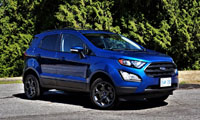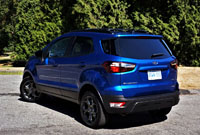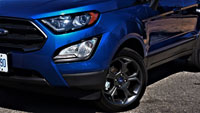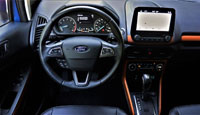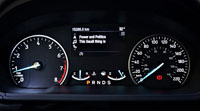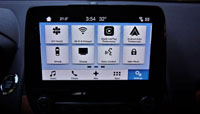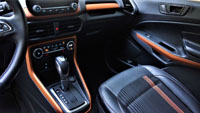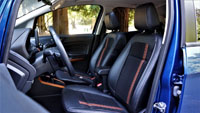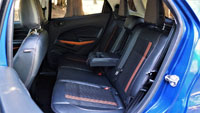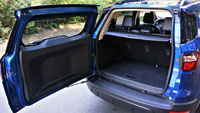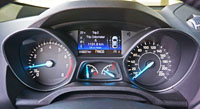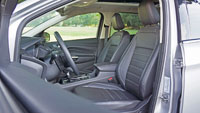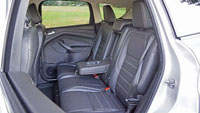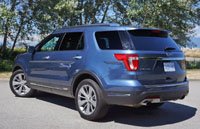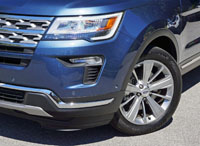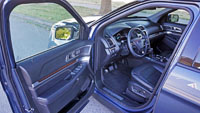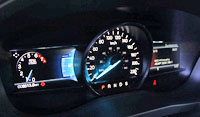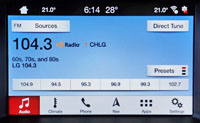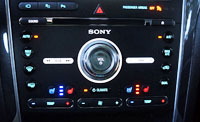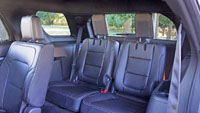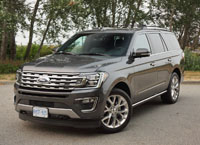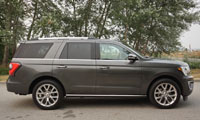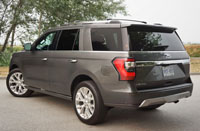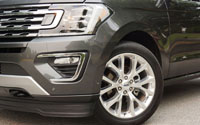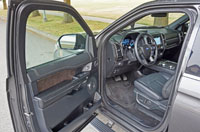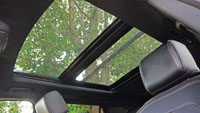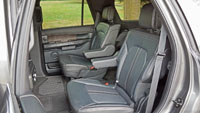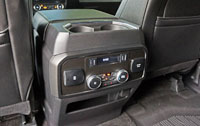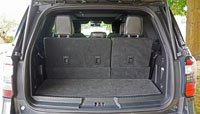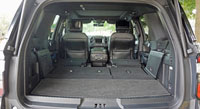
If you’ve been reading my latest reviews here, you’ll know that I scour Canada’s retail auto network before putting fingers to the keyboard, as it wouldn’t make much sense to write about a new vehicle that’s no longer available. As it is, plenty of 2019 Ford Flex examples are still very much available despite being a discontinued model, so for those enamoured with its unusual good looks I recommend paying attention.
I’m guessing your local Ford dealer will be happy to give you a great deal on a Flex if he happens to have one still available, while CarCostCanada is claiming up to $5,500 in additional incentives for this final 2019 model.
The Flex has been in production for more than 10 years, and while it initially got off to a pretty good start in Canada with 6,047 units sold in calendar year 2009, 2010 quickly saw annual deliveries slide to 4,803 examples, followed by a plunge to 2,862 units in 2011, a climb up to 3,268 in 2012, and then another drop to 2,302 in 2013, 2,365 in 2014, a low of 1,789 in 2015, a boost to 2,587 in 2016, and 2,005 in 2017. Oddly, year-over-year sales grew by 13.4 percent to 2,273 units in 2018 to and by 9.6 percent to 2,492 deliveries in 2019, which means three-row crossover SUV buyers are still interested in this brilliantly unorthodox family mover, but it obviously wasn’t enough to make Dearborn commit to a redesign, and in hindsight this makes perfect sense because three-row blue-oval buyers have made their choice clear by gobbling up the big Explorer in to the point that it’s one of the best selling SUVs in its class.

The Flex and the outgoing 2011–2019 Explorer share a unibody structure that’s based on Ford’s D4 platform, and that architecture is a modified version of the original Volvo S80/XC90-sourced D3 platform. Going back further, the first D3 to wear a blue oval badge was Ford’s rather nondescript Five Hundred sedan, which was quickly redesigned into the sixth-generation 2010–2019 Taurus and only cancelled recently, thus you can save you up to $5,500 in additional incentives on a Taurus as well (see our 2019 Ford Taurus Canada Prices page to find out more). If you want to trace the Flex back to its roots, check out the 2005–2007 Freestyle that was renamed Taurus X for 2008–2009.
Those older Ford crossovers never got the respect they deserved, because they were comfortable, well proportioned, good performers for their time, and impressively innovative during that era too. The Freestyle was the first domestic SUV to use a continuously variable transmission (CVT), at least as far as I can remember, and it was one of the biggest vehicles to do so up that point (Nissan edged Ford out with its Murano by a couple of years). Interestingly, Ford soon stopped using CVTs in its large vehicles, instead choosing a six-speed automatic for the Flex and the fifth-generation Explorer, which is a good thing as it has been a very dependable gearbox.
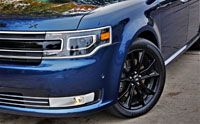
Mechanicals in mind, the Flex continues to use the same two versions of Ford’s popular 3.5-litre V6 that were offered in the original model. To be clear, the base Duratec engine, which produced 262 horsepower and 248 lb-ft of torque before 2013, after which output increased to 287 horsepower and 254 lb-ft of torque. The base engine pushes the three-row seven-passenger crossover along at a reasonably good pace, but the turbocharged 3.5-litre Ecoboost V6 that became optional in 2010 turned it into a veritable flyer thanks to 355 horsepower and 350 lb-ft of torque, while an additional 10 horsepower to 365 has kept it far ahead of the mainstream volume branded pack right up to this day.
That’s the version to acquire and once again the configuration I recently spent a week with, and it performed as brilliantly as it did when I first tested a similarly equipped Flex in 2016. I noticed a bit of front wheel twist when pushed hard off the line at full throttle, otherwise called torque steer, particularly when taking off from a corner, which is strange for an all-wheel drive vehicle, but it moved along quickly and was wonderfully stable on the highway, not to mention long sweeping corners and even when flung through sharp fast-paced curves thanks to its fully independent suspension setup and big, meaty 255/45R20 all-season rubber. I wouldn’t say it’s as tight as a premium SUV like Acura’s MDX, Audi’s Q7 or BMW’s X7, but we really can’t compare those three from a price perspective. Such was the original goal of the now defunct Lincoln MKT, but its styling never took off and therefore it was really only used for airport shuttle and limousine liveries.
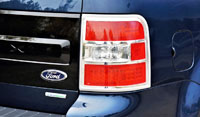
Like the MKT and the many three-row Japanese and European crossover utilities available, the Flex is a very large vehicle, so no one should be expecting sports car-like performance. Combined with its turbo-six powerplant is the dependable SelectShift six-speed automatic mentioned earlier, and while not as advanced as the 7-, 8-, 9- and now even 10-speed automatics coming from the latest blue-oval, Lincoln and competitive products, it shifts quickly enough and is certainly smooth, plus it doesn’t hamper fuel economy as terribly as various brands’ marketing departments would have you believe. I love that Ford included paddle shifters with this big ute, something even some premium-branded three-row crossovers are devoid of yet standard with the more powerful engine (they replace the lesser engine’s “Shifter Button Activation” on the gear knob), yet the Flex is hardly short on features, especially in its top-tier Limited model.
The transmission is probably best left to its own devices if you want to get the most out of a tank of fuel no matter which engine you choose, and to that end the Ecoboost V6 is the least efficient at 15.7 L/100km in the city, 11.2 on the highway and 13.7 combined, but this said it’s not that much thirstier than the base engine and its all-wheel drivetrain that uses a claimed 14.7 city, 10.7 highway or 12.9 combined, which itself is only slightly less efficient than the base FWD model that gets a rating of 14.7, 10.2 and 12.7 respectively.

The 2019 Flex comes in base SE, mid-range SEL and top-tier Limited trims, according to the 2019 Ford Flex Canada Prices page found right here on CarCostCanada. This is where you can see all the pricing and feature information available for the Flex and most other vehicles sold in Canada. The 2019 Flex is available from $32,649 plus freight and fees for the SE with FWD, $39,649 for the SEL with FWD, $41,649 for the SEL with AWD, and $46,449 for the Limited that comes standard with AWD. All trims come standard with the base engine, but the Limited can be upgraded with the more powerful turbocharged V6 for an extra $6,800 (it includes other upgrades too).
Before adding additional options the retail price of a 2019 Flex Limited Ecoboost AWD is $53,249, and along with its aforementioned performance enhancements it gets everything standard with the regular Limited model, such as 19-inch silver-painted alloy wheels wrapped with 235/55 all-season tires, HID headlamps, fog lights, LED tail lamps, a satin-aluminum grille, chrome door handles, bright stainless steel beltline mouldings, a satin aluminum liftgate appliqué, a powered liftgate, bright dual exhaust tips, power-folding heated side mirrors with memory and security approach lights, rain-sensing wipers, reverse parking sonar, and I’ve only talked about the exterior.

Ford provides remote start to warm it up in winter or cool it down in summer, all ahead of even getting inside, while access comes via a keyless proximity system or the automaker’s exclusive SecuriCode keypad. Likewise, pushbutton start/stop keeps the engine purring, Ford MyKey maintains a level of security when a valet or one of your children is behind the wheel, while additional interior features include illuminated entry with theatre dimming lighting, a perforated leather-clad steering wheel rim with real hardwood inlays, Yoho maple wood grain inlays, power-adjustable pedals with memory, perforated leather upholstery for the first- and second-row seat upholstery, a 10-way power driver’s seat with memory, a six-way power front passenger’s seat, heated front seats, an auto-dimming centre mirror, an overhead sunglasses holder, ambient interior lighting with seven colours that include (default) Ice Blue, as well as soft blue, blue, green, purple, orange and red, plus Ford’s Sync 3 infotainment system, excellent sounding 12-speaker Sony audio, satellite radio, two USB charging ports in the front console bin, two-zone auto climate control, rear manual HVAC controls, four 12-volt power points, a 110-volt household-style three-prong power outlet, blind spot information with cross-traffic alert, and more.

For a ten year old design, the Flex looks fairly up to date as far as electronics go, thanks to its Cockpit Integrated Display that incorporates two high-resolution displays within the primary instrument cluster (it was far ahead of its time back in 2009), while the just-mentioned Sync 3 infotainment touchscreen is still impressive too, due to updates through the years. It incorporates a big, graphically attractive and well-equipped display with quick-reacting functionality plus good overall usability, its features including accurate available navigation as well as a very good standard backup camera with active guidelines, albeit no overhead camera even in its topmost trim. Apple CarPlay and Android Auto smartphone connectivity is standard, however, plus the ability to download more apps, etcetera.
On top of the Limited trim’s standard features a $3,200 301A package can be added with features such as a heated steering wheel, truly comfortable 10-way power-adjustable front seats with three-way cooling, dynamic cruise control, Collision Warning with autonomous emergency braking, and Active Park Assist semi-autonomous parking capability, but note that all of the 301A features come standard already when choosing the more powerful engine, as does a special set of 20-inch polished alloy wheels, a powered steering column, a one-touch 50/50-split power-folding third row with tailgate seating, and an engine block heater.

As you may already noticed, my tester’s wheels are gloss-black 20-inch alloys that come as part of a $900 Appearance package which also includes additional inky exterior treatments to the centre grille bar, side mirror housings, and rear liftgate appliqué, plus it adds Agate Black paint to the roof and pillars, while the cabin receives a special leather-clad steering wheel featuring Meteorite Black bezels, plus an unique graphic design on the instrument panel and door-trim appliqués, special leather seat upholstery with Light Earth Gray inserts and Dark Earth Gray bolsters, as well as floor mats with a unique logo.
My test model’s Vista panoramic multi-panel glass roof has always been an individual option, adding $1,750 to this 2019 model, but I found it a bit odd that voice-activated navigation (with SiriusXM Traffic and Travel Link) as a standalone add-on (navigation systems usually bundled as part of a high-level trim line), while the gloss-black roof rails can also be individually added for just $130, but the roof rails, which are also available in silver, come as part of a $600 Cargo Versatility package too, which combines the otherwise $500 Class III Trailer Tow package (capable of up to 4,500 lbs or 2,041 kg of trailer weight) with first- and second-row all-weather floor mats (otherwise a $150 option), resulting in more four-season practicality.
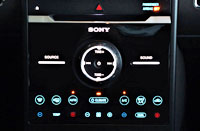
Over and above items included in my test model, it’s also possible to add a refrigerated centre console for $650, second-row captain’s chairs with a centre console for just $150 (but I prefer the regular bench seat as the smaller portion of its 60/40-split configuration can be auto-folded from the rear), inflatable second-row seatbelts for $250 (which enhance rear passenger safety), and two-screen (on the backs of the front headrests) rear entertainment for $2,100.
Of course, many of the Limited trim’s features get pulled up from base SE and mid-range SEL trims, both being well equipped for their price ranges too, I should also mention that the Flex’s interior isn’t quite as refined as what you’d find in a new 2020 Explorer with the same options, per say. Then again I remember how impressed I was with the Flex’s refinement when it arrived 10 or so year ago, which really goes to show how far Ford has come in a decade, not to mention all of the other mainstream brands. The latest Edge, for example, which I tested in its top-tier trim recently, is likely better than the old Lincoln MKX, now replaced by the much-improved Nautilus, whereas the Flex’s cabin is more like the old Edge inside.
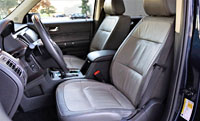
Therefore you’ll have to be ok with good quality albeit somewhat dated details, such as its large, clunky, hollow plastic power lock switches instead of Ford’s newer models’ more upscale electronic buttons, while there’s a lower grade of hard plastic surfaces throughout the interior too. This said its dash-top receives a fairly plush composite covering, as does each door upper from front to back, whereas the door inserts have always been given a nifty graphic appliqué, just above big padded armrests.
As you might imagine, the Flex is roomy inside. In fact, its predecessor was designed to replace the Freestar minivan back in 2007, so it had to have minivan-like seating and cargo functionality. This said the Flex’s maximum cargo volume of 2,355 litres (83.1 cubic feet) when both all rear seats are tumbled down doesn’t come close to the brand’s once-popular minivan that managed a total of 3,885 litres (137.2 cu ft) of luggage volume in its day, but it’s generously proportioned for a mid-size crossover. In fact, the Flex can manage 42 additional litres (1.5 cu ft) of total storage space than the outgoing 2019 Explorer, which was one of the biggest SUVs in its three-row segment. That said the new 2020 Explorer offers up to 2,486 litres (87.8 cu ft) of maximum cargo capacity, which improves on both of Ford’s past SUVs (Flex included).
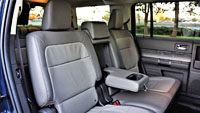
The rear liftgate powers upward to reveal 426 litres (15.0 cu ft) of dedicated luggage space aft of the rearmost seats, which is in fact 169 litres (6.0 cu ft) less than in the old Explorer, but if you lower the second row the Flex nearly matches the past Explorer’s cargo capacity with 1,224 litres (43.2 cu ft) compared to 1,240 litres (43.8 cu ft). A nifty feature noted before allows the final row to be powered in the opposite direction for tailgate parties, incidentally, but make sure to extend the headrests for optimal comfort.
Total Flex passenger volume is 4,412 litres (155.8 cu ft), which results in a lot of room in all seating positions, plus plenty of comfort. Truly, even third row legroom is pretty decent, while headroom is lofty everywhere inside thanks to a high roofline. Ford made sure there was enough space from side-to-side too, this due to a vehicle that’ quite wide. The aforementioned panoramic sunroof adds to the feeling of openness as well, and its three-pane construction is pretty intelligent as it allows for better structural rigidity than one large opening, which is particularly important for a vehicle with such a large, flat roof. Additional thoughtful features include large bottle holders within the rear door panels, these wholly helpful at drive-thrus.

I’m guessing you can tell I like this unusual box on wheels, and must admit to appreciating Ford for its initial courage when bringing the Flex to market and its willingness to keep it around so long. I know it’s outdated, particularly inside, plus it’s missing a few features that I’d like to see, such as outboard rear seat warmers and USB charging ports in the second row, but it’s difficult to criticize its value proposition after factoring in the potential savings Ford has on the table. I’m sure that opting for this somewhat antiquated crossover might be questionable after seeing it parked beside Ford’s latest 2020 Explorer, but keep in mind that a similarly equipped version of the latter utility will cost you another $10,000 or so before any discounts, while the domestic manufacturer is only providing up to $2,000 in additional incentives for this newer SUV. That’s a price difference of more than $13,000, so therefore a fully loaded Flex might make a lot of sense for someone looking for a budget-minded luxury utility.

A month or so ago, before we all became aware of the COVID-19 outbreak, I would’ve probably recommended for those interested in buying a new Flex to rush over to their local dealer and scoop one up before they all disappeared forever, and while they certainly will be gone at some point this year I recommend you find one online like I did, and contact the respective dealership directly via phone or email. Still, doing your homework before making the call or sending the message is a good idea, so make sure to visit our 2019 Ford Flex Canada Prices page first, where you can learn about every trim and price, plus find out if any new manufacturer discounts, rebates and/or financing/leasing packages have been created, while don’t forget that a membership to CarCostCanada provides otherwise difficult to access dealer invoice pricing (which is the price the retailer actually pays the manufacturer for the vehicle). This will provide you the opportunity to score the best-possible deal during negotiation. After that, your Ford dealer will ready your new Flex for delivery.
So therefore if this unorthodox crossover utility is as appealing to you as to me, I recommend you take advantage of the tempting model-ending deal mentioned earlier. The Flex might be an aging SUV amongst the plethora of more advanced offerings, but don’t forget that this aging crossover still comes across as fresh thanks to its moderate popularity (you won’t see a lot of them driving around your city), while its long well-proven tenure means that it should be more dependable than some of its newer competitors.
Story credit: Trevor Hofmann
Photo credits: Karen Tuggay

